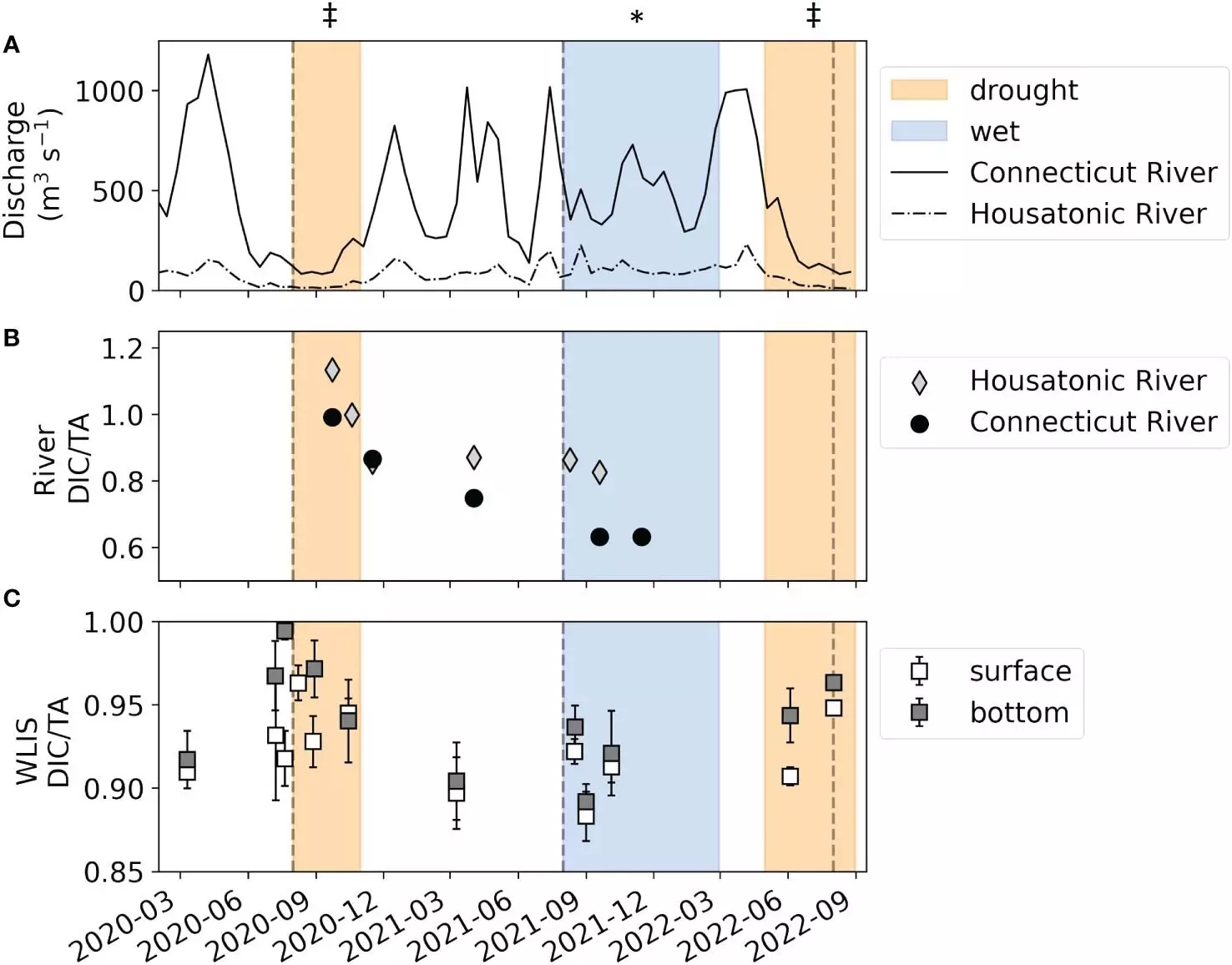Long Island Sound (LIS), nestled in the heartbeat of North America’s urban landscape, serves as a pivotal estuary within the North Atlantic Ocean. The Sound is not merely a picturesque seascape; it’s a vital ecological and economic resource shadowed by the expanding metropolitan boundaries of New York City. With escalating passenger transport, recreational boating, and cargo shipping, these daily activities have significantly compromised the marine ecosystem, leading to alarming environmental degradation. The profusion of anthropogenic influences—ranging from noise and chemical pollution to the overexploitation of marine species—has steadily obliterated the natural balance, endangering the resilience of various organisms that inhabit this crucial estuary.
This escalation of marine traffic has resulted in a profound auditory intrusion and various forms of pollution, with chemical and nutrient runoff at the forefront. This nutrient overload has spurred a phenomenon known as eutrophication, characterized by an overabundance of aquatic nutrients that catalyze rampant algae blooms. Upon proliferation and subsequent decay, these algal blooms deplete oxygen levels in the water—a dire situation for aquatic life struggling to survive. The consequences are particularly grim for fish populations, which experience mass die-offs due to hypoxic conditions that reduce the available oxygen necessary for survival. The implications of such ecological degradation extend far beyond mere fish populations; they put the entire marine food web at risk while undermining local economies dependent on healthy fisheries.
Acidification: A Silent Menace
Recent research conducted by Doctoral Researcher Lauren Barrett and colleagues from the University of Connecticut underscores a pressing, yet less widely acknowledged, consequence of eutrophication: acidification. This issue is intricately related to the marine carbonate system, a critical regulator of both environmental and biological processes in LIS. The primary source of nutrient enrichment—largely nitrogen—emanates from various avenues including atmospheric deposition, agricultural runoff, and inefficient wastewater treatment systems. These pollutants do not merely compromise water quality; they have far-reaching implications, triggering a cascade of ecological changes that may challenge the long-term viability of the Sound’s marine ecosystems.
During an extensive sampling campaign from 2020 to 2022, the research team uncovered alarming seasonal variations in dissolved organic carbon and total alkalinity, essential parameters in understanding the region’s evolving carbonate system. It is noteworthy that changes in carbonate chemistry cannot be fully encapsulated by pH levels alone. Understanding these shifts becomes crucial, especially when considering events like tropical storms that flood the region with freshwater. The dramatic fluctuation in river discharge alters the chemical milieu of the Sound, showcasing a complexity often overlooked in discussions around eutrophication.
Seasonal Patterns: A Tale of Droughts and Floods
Intriguingly, the data highlights a disparity in conditions during high freshwater years and droughts. For instance, a marked increase in precipitation in 2021, influenced by multiple tropical storms, resulted in a temporary respite from acidification in the western sections of LIS. Conversely, during drought periods in 2020 and 2022, an uptick in dissolved organic carbon was observed, further exacerbating acidifying conditions. This pattern is paradoxical, as many ecosystems typically see reduced nutrient loads during dry spells, leading to decreased eutrophication. Here, LIS presents a unique ecological narrative, complicating our understanding of estuarine dynamics.
Path Forward: Challenges and Opportunities
The urgency of addressing the treatment of nitrogen runoff cannot be overstated. While accomplishments such as a 58.5% reduction in nitrogen input since the implementation of total maximum daily loads in 2000 show promise, the reality remains grim. As climate change continues to exacerbate drought conditions, the risk of growing acidification in LIS looms larger each year. Successful management of the Sound requires proactive and robust action plans that not only curb nitrogen inputs but also promote restorative practices to repair the damage done.
Moreover, fostering public awareness surrounding the ecological and economic value of Long Island Sound is essential. The region’s natural beauty and its resources are not merely assets; they represent a living system that deserves protection. If communities engage more actively in conservation efforts and advocate for sustainable practices, they can contribute to reversing some of the negative impacts on the Sound’s fragile marine environment. Recognizing that the health of Long Island Sound is intrinsically linked to human activity is the first step towards ensuring its resilience against the evolving challenges posed by climate change and urbanization.

